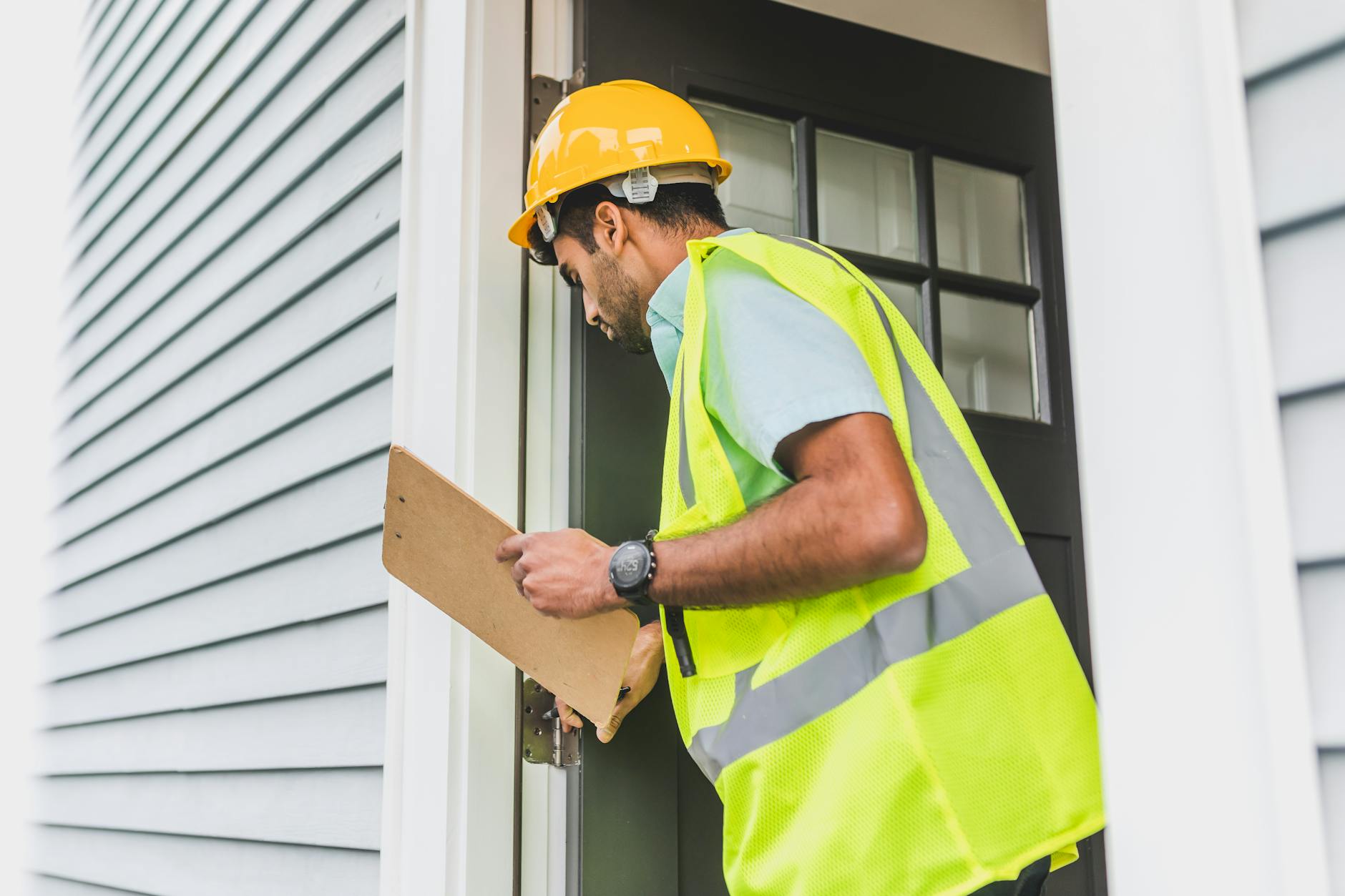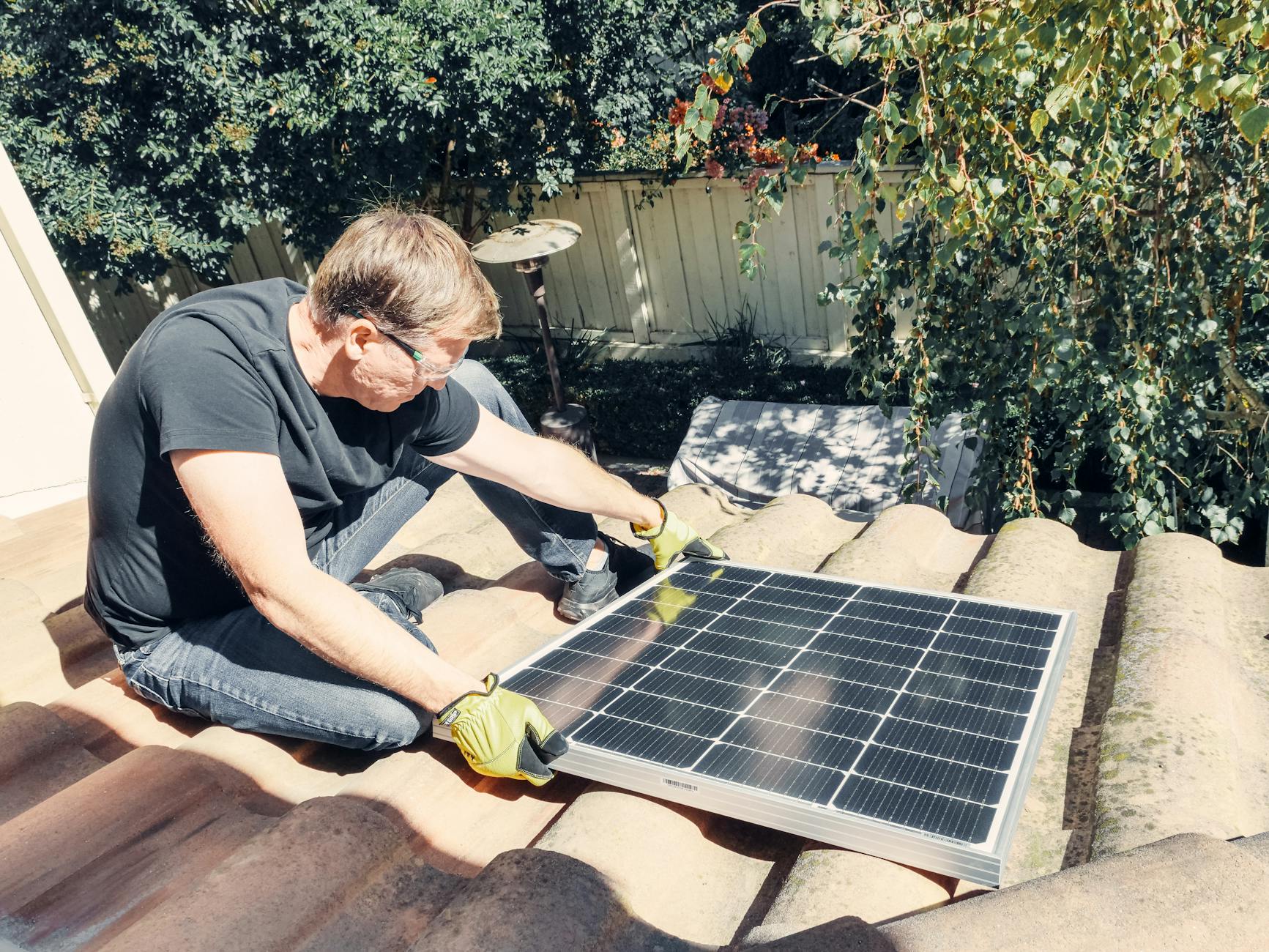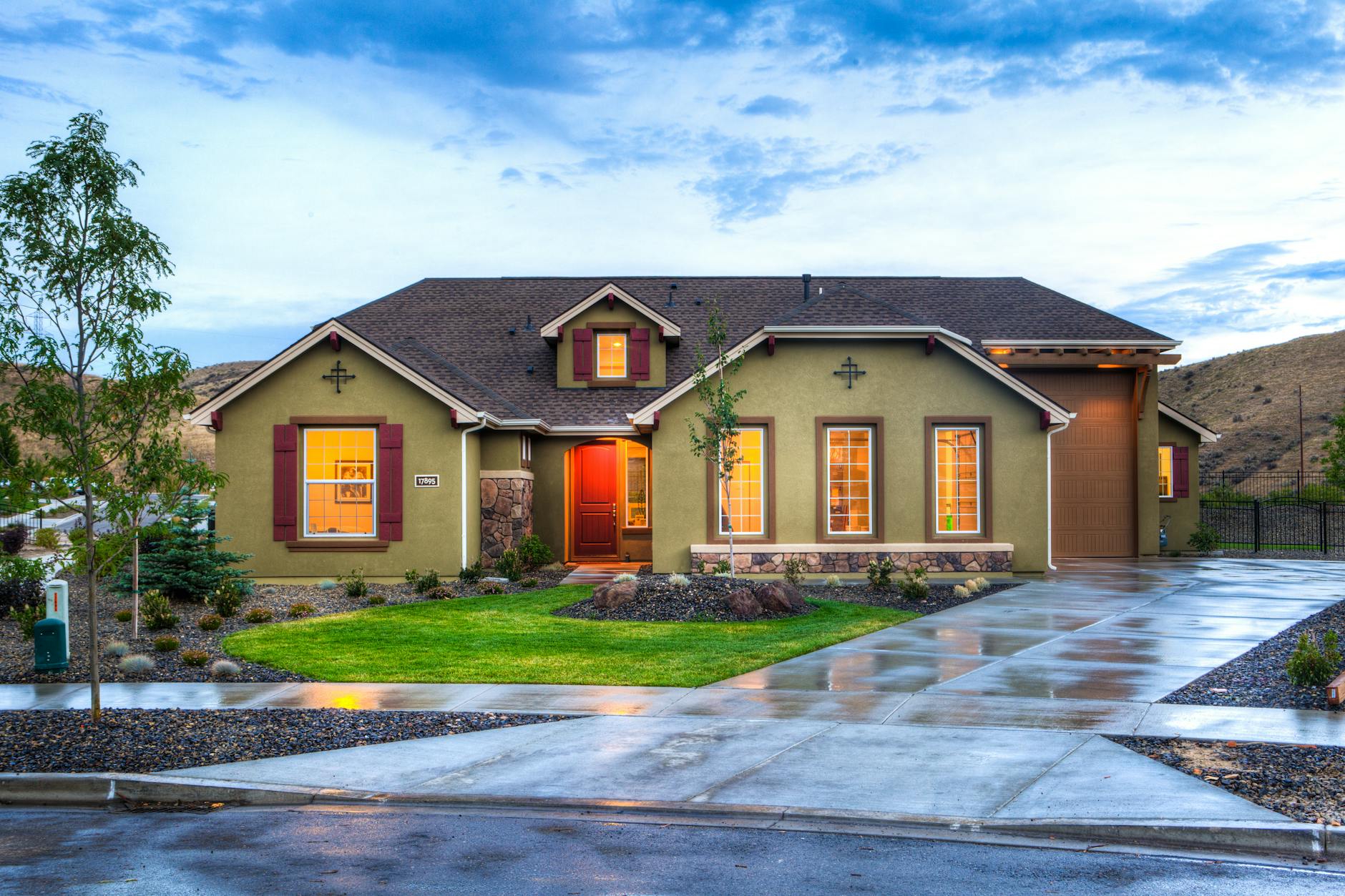Your home’s exterior is more than just a facade; it’s the first thing people see and your shield against the elements. Over time, wear and tear can sneak up in small, unnoticed ways, leading to bigger problems down the road. Cracked siding, peeling paint, or drafty windows may seem minor, but they could be signs of structural damage or energy inefficiency. Updating your exterior not only boosts curb appeal but also protects your home and saves you money. Knowing what to look for can make all the difference.
Your home’s exterior is its first line of defense against weather and wear. Over time, visible damage can signal deeper issues that, if ignored, may lead to costly repairs. Let’s take a closer look at some common warning signs.
Cracked or warped siding isn’t just an eyesore—it’s a red flag. When siding cracks or bends, it creates an opening for moisture to seep in. Once water gets through, it can compromise your home’s insulation and lead to structural rot. Think of your siding as an armor for your house; a crack in that armor exposes your home to risks.
Cracks are often caused by weather-related stress—extreme heat, cold, or frequent exposure to storms. Warping? That’s often due to improper installation or material aging. If you notice these signs, act quickly. Leaving damage unchecked could result in skyrocketing repair costs or mold problems inside your home.

Photo by RDNE Stock project
Peeling or faded paint isn’t just a cosmetic issue. It often indicates that your siding has reached its limit due to prolonged UV exposure or moisture damage. Consistent sunlight can cause paint to fade, leaving your siding vulnerable to further deterioration. On the other hand, peeling may be a sign of water infiltration causing the paint to blister and lose adhesion.
Think about it—paint is like a protective jacket for your siding. When that jacket wears thin, the materials beneath it are exposed to the elements. If you see these signs, it’s time for a fresh coat or possibly a full inspection of the siding underneath.
If you spot rot or mold growth, take it seriously. This kind of damage often stems from moisture that’s infiltrated the siding and settled into the wood or other materials beneath it. Rot weakens the structural integrity of your home, while mold poses health risks, especially for individuals with respiratory conditions or allergies.
Mold on the exterior might not seem like a big deal, right? But mold rarely stays put—it can creep inside, bringing with it unpleasant odors and even more growth. Plus, extensive rot can lead to costly repairs far beyond a simple siding replacement.
Pay attention to these visible signs on your home’s exterior. While they might start small, ignoring them often leads to larger, more expensive problems.
Your roof and gutters play a critical role in protecting your home from the elements. If they’re in bad shape, it’s not just a cosmetic concern; it’s a signal that your home is at risk for serious—and often expensive—damage. Here’s what you need to look out for.
Missing or damaged shingles aren’t just minor blemishes; they’re an invitation for water to wreak havoc on your home. When shingles are cracked, curled, or missing altogether, they allow moisture to seep beneath the protective layers of your roof. Over time, this can lead to leaks, wood rot, and even mold development inside your home.
Shingle damage is often a result of high winds, hail, or simply the aging of your roof. Have you noticed areas where shingles appear darkened or granules collecting in your gutters? This indicates wear and tear. If ignored, even a small gap caused by a missing shingle can go from being a minor repair job to a major roofing overhaul.

Photo by Kindel Media
Take a proactive approach—inspect your roof regularly and consult a professional if you spot visible damage. It’s cheaper to replace a handful of shingles now than to deal with interior water damage later.
Gutters may not be glamorous, but they’re key players in your home’s defense against water damage. Their main job? Directing rainwater safely away from your home. When they’re sagging, leaking, or constantly overflowing, they’re not doing their job, and that puts your foundation at risk.
How do gutters end up in bad shape? Usually, it’s a combination of age, debris buildup, and neglect. Blocked gutters from leaves and twigs can cause water to pool and spill over the edges, creating a “waterfall effect” down your walls and into your foundation. Worse, sagging gutters can pull away from the house entirely, letting water flow to areas it doesn’t belong.
If you see water stains beneath your gutters, peeling paint near the fascia, or even soil erosion near your foundation, it’s time for a fix. Left unchecked, poor gutter performance could lead to widespread foundation issues, cracked walls, and even basement flooding.
By keeping your gutters cleaned and having them professionally inspected at least twice a year, you can save a lot of headaches—and money—in the long run.
Keep these signs in mind to prevent small issues from becoming costly repairs. Roofing and gutter health aren’t just about keeping water out; they’re about protecting your investment and maintaining the comfort of your home.
Energy inefficiency can creep up without warning, but it shouldn’t be ignored. When your home isn’t properly sealed, insulated, or up-to-date, it costs more to maintain comfortable temperatures year-round. Plus, the burden on heating and cooling systems increases, leading to wear and tear over time. Let’s explore key signs that your home may be losing energy—and money.
Does cold air seem to sneak into your home during the winter months, or does your AC fail to keep the summer heat at bay? Leaky windows and doors are often the culprits. Poorly sealed or outdated windows and doors allow air infiltration, which forces your HVAC system to work overtime.
Look for noticeable drafts near windows and doors or gaps where they meet the frame. This often happens when seals age or windows lack double or triple-pane glass. Did you know even tiny cracks in these areas can bring down your home’s energy efficiency rating? Think of a draft like leaving a window slightly open all year round—it’s a direct path for air to escape and energy to go to waste.
To identify potential leaks, try closing all doors and windows tightly, then feel along their edges for airflow. For an extra test, hold a lit incense stick or candle and watch if the smoke or flame wavers. If your home fails the test, it may be time to upgrade to modern, energy-efficient replacements.
If you’ve noticed a spike in your energy bills without any obvious explanation, it could be a red flag. Often, increased heating or cooling costs are tied to energy inefficiencies with your home’s exterior. For instance, damaged siding or insufficient insulation allows conditioned air to escape, causing your heating or cooling systems to overcompensate.
Take a closer look at your bills from the past year. Are the winter or summer months disproportionately high compared to those of similar-sized homes in your area? This kind of data analysis can reveal costly inefficiencies.
Modernizing exterior components, such as siding or insulation, can drastically reduce energy leakage. If replacing these isn’t feasible right away, consider adding caulking or weather-stripping as a temporary fix until larger updates can be made. Small steps now could mean bigger savings in the long term.
Your home’s exterior is the ultimate first impression. It’s not just about what passersby see; it’s about how potential buyers, neighbors, and even you feel when looking at your space. A dated appearance or mismatched landscape can drastically lower the curb appeal, affecting not just the beauty of your home but also its market value.
Outdated siding styles, faded paint, or outdated colors can make your home feel like it belongs in a different era—often in a bad way. For example, siding with textures or colors that were trendy decades ago can work against the clean, modern aesthetics people are drawn to today. If your home doesn’t align with current design trends, buyers may see it as “work waiting to be done.”
Popular modern choices include neutral color palettes like whites, tans, or slate grays, often accented with bolder trims to create contrast and interest. This shift means that older exteriors with bright yellows or dated materials like aluminum siding can feel jarring. While maintaining the character of your home is important, functionality is critical. Materials like fiber cement or vinyl siding provide durability while embracing today’s cleaner styles.

Photo by Binyamin Mellish
Upgrading an outdated element like siding or exterior color typically offers a strong return on investment, not only enhancing aesthetic appeal but also signaling to buyers that the home is well-maintained and move-in ready.
Your home’s landscaping should complement its exterior, not compete with it. However, overgrown shrubs, patchy lawns, or overly busy gardens can create a chaotic look when paired with a weathered or poorly designed facade. Think of mismatched landscaping as wearing mismatched socks with a formal suit—it sends conflicting signals.
Landscaping is like the frame to a masterpiece. When it’s lopsided, overgrown, or poorly executed, it takes away from the “canvas”—your home. For example, if you have a cluttered yard paired with peeling trim or cracked siding, your exterior presents as uncared for, even if that’s not the reality. On the other hand, coordinated landscaping with lighting features, manicured hedges, and healthy plants gives your home an inviting, curated glow.
Small fixes such as edging the driveway with flowers, adding pathway lights, or introducing year-round greenery can give your home a polished vibe without major changes. Plus, complementing your garden colors with exterior tones will tie the entire picture together.
Whether you’re planning to sell now or down the road, your home’s exterior is a direct reflection of its overall value. The term “curb appeal” exists for a reason—how your home looks from the street can add or subtract thousands of dollars to its perceived worth. A study from The Journal of Real Estate Finance and Economics found that homes with strong curb appeal can sell for up to 7% more than those without.
If your home’s exterior is in disrepair—think chipped paint, dented siding, or sagging gutters—buyers immediately start tallying up the cost of repairs. First impressions are powerful—buyers who are unimpressed outside are less likely to walk through the front door. Even things as small as an outdated front door color or cracked porch tiles send signals of neglect, lowering interest.
Simple updates like repainting, power washing, or installing new lighting are cost-effective ways to maintain a polished and appealing look. Combine these with larger investments, such as new siding or a modernized roofline, to make your home visually stand out while increasing its value. In essence, your home’s exterior isn’t just a decoration; it’s a key financial asset that deserves attention.
Your home’s stability is its foundation—literally and figuratively. But structural damage, especially when paired with water issues, can sneak up silently and lead to costly repairs or even safety hazards. Recognizing early warning signs might save you from a much larger problem down the road. Let’s explore two critical areas: cracks in your foundation or walls, and unstable outdoor spaces like porches and decks.
Small cracks in your foundation or walls might seem harmless at first, but they can quickly develop into serious concerns. Over time, these fractures can widen and compromise your home’s structural integrity. Why does this happen? Excess water from poor drainage, clogged gutters, or unchecked leaks can saturate the soil surrounding your foundation. As the soil expands and contracts with moisture changes, it creates stress on the foundation, leading to shifts and cracks.
Here are some key signs to look for:
If you see cracks larger than a quarter of an inch, you should take action. Left untreated, these fractures can create pathways for water seepage, fostering mold and even leading to uneven floors or sagging ceilings.

Photo by Kafeel Ahmed
Foundation cracks are like potholes in a road—they may start small, but if neglected, they’ll lead to bigger, more expensive headaches.
Your outdoor living areas should be a retreat, not a risk. Porches and decks, when not properly maintained, can become unstable over time. Loose boards, rotting wood, or rusty nails are telltale signs that repairs are needed.
How do these issues relate to water damage? Excess moisture is often the culprit. Rain, snow, and humidity can cause wooden structures to rot and nails to rust, weakening the entire framework. One way to test your deck’s safety: gently push against railing posts. If there’s significant movement, it’s time for reinforcement.
Common warning signs include:
Whether your porch feels like it’s swaying in the wind or your deck has uneven boards, addressing these issues early ensures that outdoor spaces remain inviting—and safe. Repairs might be as simple as replacing a few boards or as complex as rebuilding entire sections, but quick action minimizes costs and risks. After all, no one wants a relaxing barbecue to turn into an emergency repair situation.
Staying on top of your home’s exterior maintenance is essential for protecting its value, efficiency, and curb appeal. Small issues like cracked siding, peeling paint, or sagging gutters can quickly escalate into costly repairs if ignored. By addressing these signs early, you safeguard your home’s structure and energy performance while enhancing its overall look.
Take action before problems worsen. Consider scheduling a professional inspection or starting with simple DIY updates. Your home deserves attention—and these improvements often pay off in both comfort and resale value. What’s the first update your home needs today?